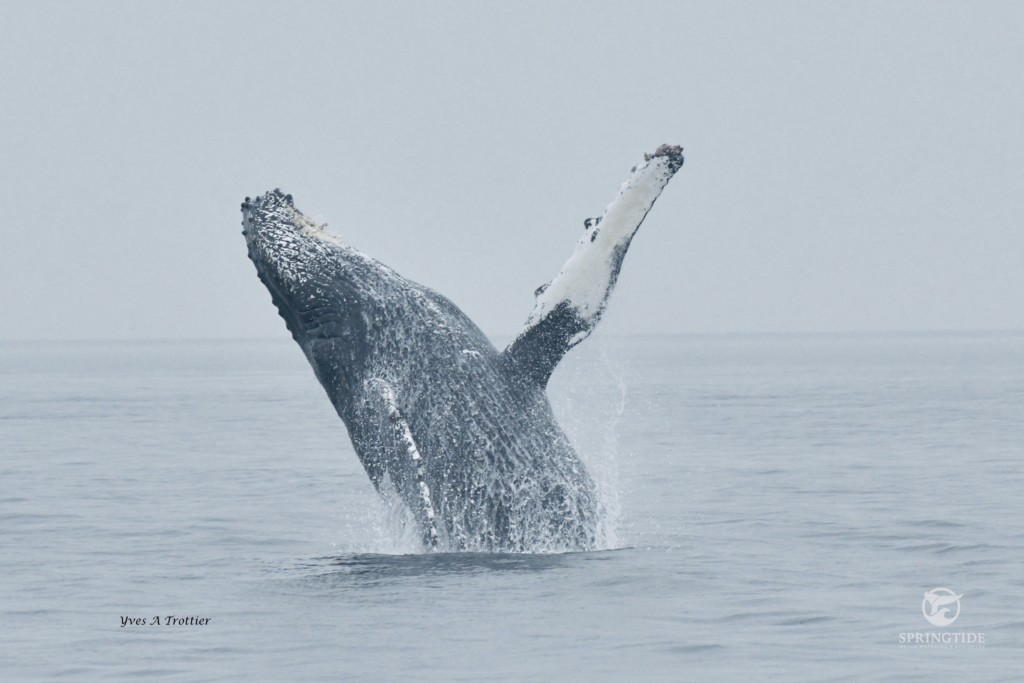Humpback Season
It may be Spooky Season for many of you, but here in the Salish Sea, it is also Humpback Season. Humpbacks begin arriving from their breeding grounds in the spring and spend the summer here in the nutrient-rich waters packing on the pounds eating up to a ton of fish and krill each day. However, the most significant number of humpbacks in the Salish Sea occurs in the fall as they take advantage of their last feeding opportunities before heading out on their long migration. Humpback Season is a relatively new phenomenon in the Salish Sea for whale watchers. Humpbacks are known to have strong site fidelity to the feeding grounds their mothers bring them to as calves. These inland waters were traditionally a vital feeding ground for humpbacks until commercial whaling nearly wiped them out. There was a moratorium on commercial whaling in 1985, and the population started slowly recovering. Still, the collective knowledge of the Salish Sea as a feeding ground was gone. That is until one brave individual, Big Mama, returned to the Salish Sea in 1997. Now the humpbacks who return each year to feed in the Salish Sea number in the hundreds – inspiring whale watchers to lovingly call this the “Humpback Comeback”.
Trick or Treat?
However, there is one genuinely frightening consequence of this mighty return. As the number of whales increases in B.C waters, so do the number of entanglements. ‘Ghost Gear’, which is lost or discarded fishing gear, makes up about 80% of the ocean’s plastics and is a massive risk to whales and other marine life. Just days ago, Paul Cottrell, a Department of Fisheries and Oceans (DFO) Marine Mammal Response member, and his team completed a remarkable rescue near Powell River in the northern section of the Strait of Georgia. This entangled humpback, accompanied by two other humpbacks, was finally freed from the 91 metres of polysteel rope stuck in its mouth and baleen. If it weren’t for Paul and his team (and those that reported this entangled whale!), this ghost gear could have affected the whale’s ability to eat and swim. Depending on the degree of entanglement, ghost gear can be fatal to the animal.
Ghost ‘Gear’ Busters!
So how can we help protect humpbacks and other sea life from ghost gear and becoming ghosts? The DFO has started The Ghost Gear Fund, which supports 42 projects on ghost gear retrieval, responsible disposal, acquisition and piloting of available technology, and international leadership. Hopefully, these projects will reduce the number of entanglements in the future. What can you do? If you see an entangled animal in British Columbia, contact the Marine Mammal Incident Reporting Hotline toll-free 24 hours a day, seven days a week, at 1-800-465-4336. It is important not to attempt to remove any fishing gear or rope from the animal. If possible, remain with the animal at a safe distance and document the entanglement and identification of the animal until trained help arrives. Removing entangled fishing gear is a highly complicated process that can be dangerous. It requires specialised skills, equipment, training and experience to ensure the maximum chance of survival for the animal. It is truly a collaborative effort to protect these magnificent mammals and their return to the Salish Sea.
Article by Katie Read, Springtide Naturalist

